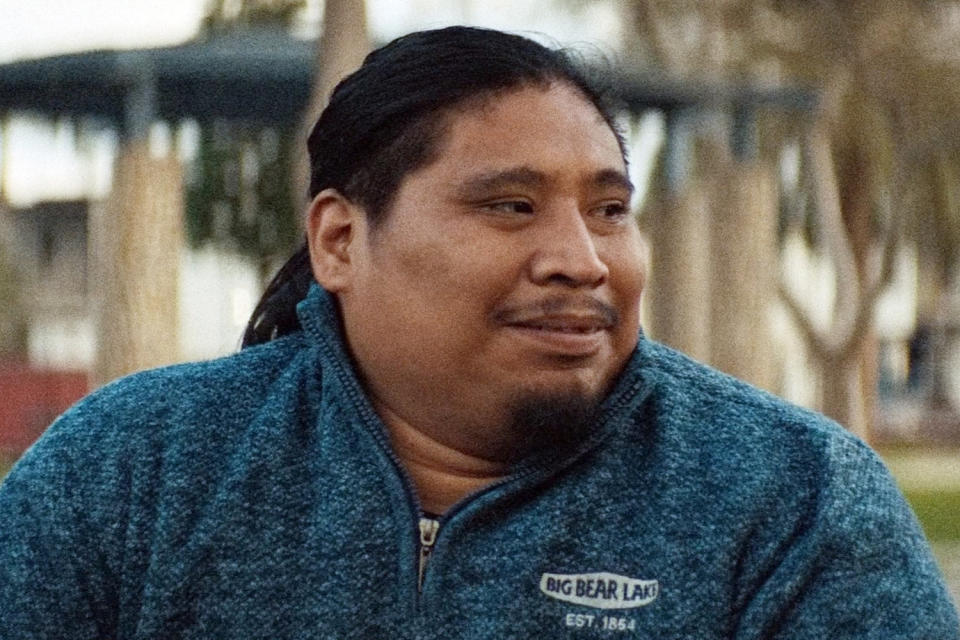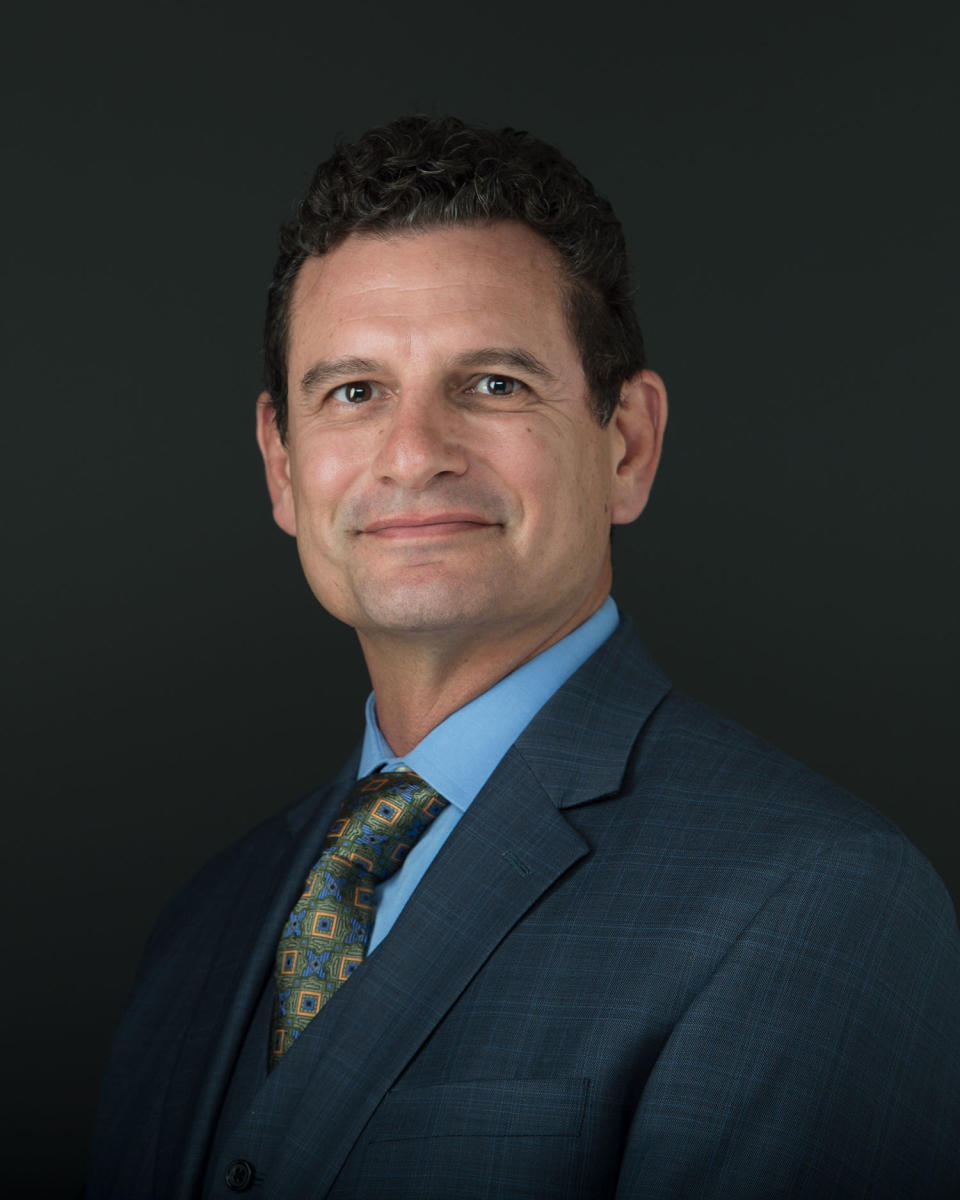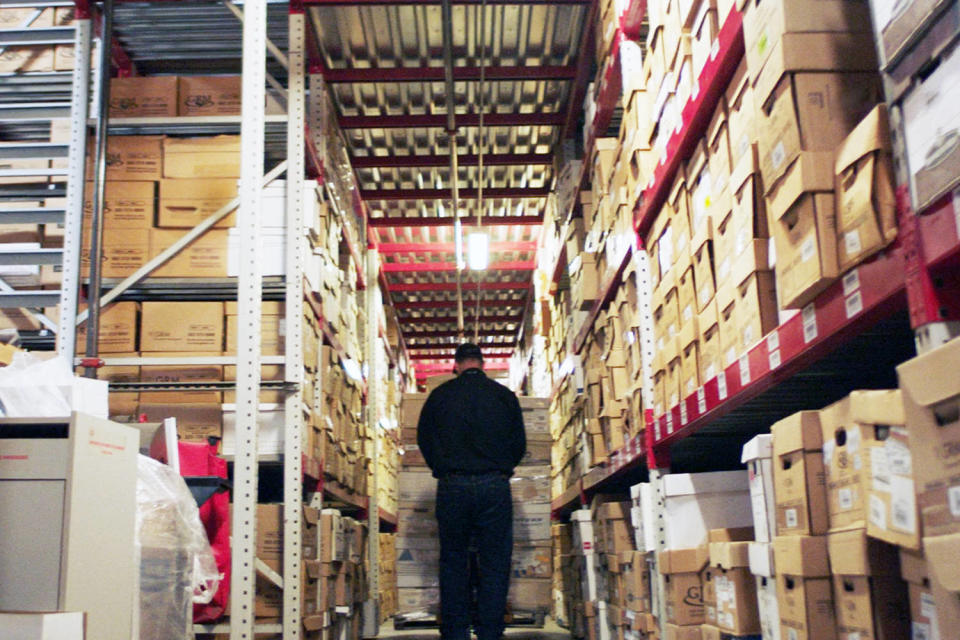These public defenders are happy to ditch 'mountains' of paper in new documentary
- Oops!Something went wrong.Please try again later.
Up until a couple of years ago, Los Angeles’ public defenders saw their jobs defined by paper — mountains and heaps of it.
“Literally, everything was paper-driven,” Los Angeles County Public Defender Ricardo García told NBC News in a video interview. “Lawyers were taking notes, putting them in paper files, [they] would have to take paper files to court.”
Noah Cox, a lawyer for the public defender’s office, said that the average felony case typically involved 5,000 sheets of paper. As he bluntly put it in a new documentary, “Paper equals time.”
Cox is featured in the documentary “Forgiving Johnny” as he defends Johnny Reyes, a person with developmental disabilities facing a 20-year prison sentence stemming from an altercation with his brother-in-law. At the center of the short film was the digitization of county records, which helped Reyes win an appeal to avoid a conviction by getting treatment instead of a decadeslong sentence.
The doc was featured Friday at The Nantucket Project, an ideas and solutions festival in Massachusetts. Basketball star Karl-Anthony Towns of the Minnesota Timberwolves is one of the executive producers.

“There are stories that may not be known by the public well,” Towns said in a phone interview with NBC News. “And I think that ‘Forgiving Johnny’ is an amazing story, showing how technology has helped someone who was disabled get out of the system.”
About 2 in 10 prisoners and 3 in 10 people in jail reported having a cognitive disability, according to 2015 data by the Bureau of Justice Statistics. That’s why, Cox said, it was crucial to find another way to approach Reyes’ sentencing — and why digital access to records and information was necessary in his client’s case.
In October 2020, the Los Angeles County Public Defender’s Office launched the first version of its digital records system. Ultimately, this made more than 160 million documents more accessible for defenders and clients within the oldest and largest public defender’s office in the country.

Towns said that the documentary shows how technology could “even the playing field” for people who have fallen through the cracks of the criminal legal system.
“When we think of technology, I think it gets clouded in all the negativity and judgment that social media has brought with it,” said Towns, who is a donor to organizations like the Vera Institute of Justice and the George Floyd Memorial Foundation and who is a member of the National Basketball Social Justice Coalition. “But technology really is a tool that was made to improve people’s lives and be a force for good.”
García, who was elected Los Angeles County public defender in 2018, is also the first Mexican American to hold that position in the office’s 110-year history. He recalled that before records were digitized during his tenure, “it was quite frankly impossible to understand the breadth and scope of the work.” This created a roadblock to fully serving historically marginalized groups in the county’s criminal legal system.

“For example, while the Black community is roughly 9% of the population in Los Angeles, they make up about 30% of the incarcerated population,” he said. “And so we see an unreasonable and excessive number of Black men and women being pulled into the criminal legal system because of existing biases and/or methods of law enforcement, or even overpolicing in those communities.”
Additionally, García pointed out that public defenders have fewer resources to help get that justice. In California, he said, prosecutors tend to receive far more in funding than public defense agencies, which inherently affects how defendants’ cases are handled. Digital records, he said, can help public defense agencies advocate for more funding with data.
“I’ve been able to grow our support services by 15% over the last two years,” he said.

James Kessler, a senior vice president at Publicis Sapient, which built the county’s vast management system of more than 160 million records, said the transformation from a paper-based system into a digital one took five years overall.
Kessler compared the old record archive for the public defender’s office, which also included decades-old computer technology, with the fictional warehouse in the first “Indiana Jones” movie.
“An analogy that I sometimes use is that scene at the end of ‘Raiders of the Lost Ark,’ when they’re burying the ark in a large government warehouse,” he said in a video interview. “And so, even just finding all of the documents that needed to be digitized was a challenge.”
Among these rediscovered documents, “some of them have been in floods. Some of them have been subject to fires. Some of them have been eaten by rats. And some of them are just plain old.”
Now, Kessler said, the process is digital from the moment a public defender sits down with a client for the first time. And this, he believes, can help balance the scale of justice for more people.

This article was originally published on NBCNews.com

